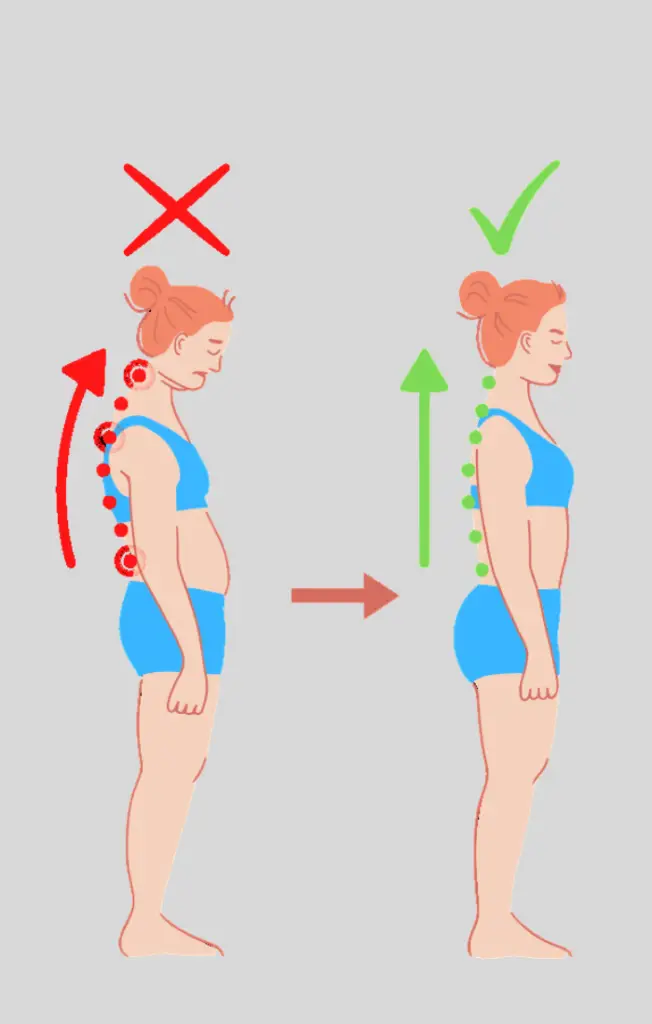Do you often find yourself carrying the weight of the world on your shoulders, both figuratively and literally? If so, you’re not alone. Many people carrying stress in shoulders and neck due to various factors such as long hours sitting at a desk, poor posture, or emotional stress. However, it’s important to address this tension before it becomes a chronic issue that affects your overall well-being.
In this article, we will explore some effective tricks to help relieve neck and shoulder tension and reduce stress. From simple relaxation techniques to stretching exercises and self-massage tips, you can incorporate these practices into your daily routine to alleviate the built-up stress in your neck and shoulders. Roll your shoulders, say goodbye to knots and stiffness, and hello to a more relaxed and comfortable state of being. Read on to learn how you can stop carrying stress in your shoulders and neck once and for all.
Table of Contents
Is Carrying Stress in Shoulders and Neck Normal?
Carrying stress in your shoulders and neck is a normal physical reaction to stress and tension. When you’re under stress, your body regularly tenses up as part of the fight-or-flight response, leading to muscle tension and soreness in these parts. This tension in the neck can result from long periods of sitting, bad posture, or maybe clenching your muscle tissue unknowingly in disturbing situations.
While it’s a normal response, chronic tension within the shoulders and neck can cause extra serious issues like headaches, restricted movements, and long-term muscle pain. It’s important to cope with those signs and symptoms through stress management techniques, regular workouts, proper ergonomics, and, if vital, professional clinical or therapeutic interventions to save you from similar complications.
Why Do We Carry Stress in Shoulders and Neck?
Carrying stress in the shoulders and neck is a common stress response to both emotional and physical stressors. When we revel in pressure, our body’s natural fight-or-flight reaction triggers the release of stress hormones like cortisol and adrenaline. These hormones cause muscle mass to nerve-racking up as a manner of getting ready for potential risk. The shoulders and neck are especially liable to this tension because of their connection to the autonomic nervous system, which regulates involuntary capabilities which include muscle tightness. Thus, this tension leads to neck and shoulder pain.
Additionally, modern lifestyles frequently involve long periods of bad posture, such as sitting at a desk or the use of electronic devices, that can exacerbate muscle tension in these parts. Emotional pressure, like anxiety or worry, further contributes to muscle anxiety, as we may also unconsciously clench or tighten these muscles when under stress. Understanding these elements can assist in developing techniques to manipulate and alleviate stress-related anxiety inside the neck and shoulders. To release tightness in your neck and shoulder, first, it is important to manage and relieve stress and anxiety mentally.

5 ways to Relieve Tension in Your Neck and Shoulders
Stress-related neck and shoulder muscle tension can be reduced through different breathing exercises, physical stretches, or yoga positions. The connection between stress and neck pain is because of the connection of the nervous system with the back and neck muscles.
Luckily, here are 5 simple ways that relieve muscle tension and tightness in these areas. Moreover, if the strain on your neck and shoulder pertains, you should seek help from a healthcare professional.
1. Neck stretch
The neck stretch is an easy but powerful workout for relieving anxiety inside the neck and shoulders. By gently tilting your head to one side, you stretch the muscle tissues alongside the opposite side of your neck, helping to release built-up tension and increase flexibility. Holding the stretch for approximately 20-30 seconds on each side can improve circulation, reduce muscle stiffness, and alleviate discomfort caused by extended stress or terrible posture.
2. Neck release
The neck release involves slowly lowering your chin closer to your chest, permitting the back of your neck to stretch. This workout targets the suboccipital muscular tissues at the base of the cranium, which are frequently tight due to pressure and long periods of looking at screens. By stretching those muscles, the neck release can help lessen headaches, enhance a variety of movements, and provide a chilled impact that eases overall anxiety within the upper body.
3. Child’s Pose
Child’s Pose is a restorative yoga position that stretches the back, shoulders, and neck while promoting relaxation. By kneeling on the ground and extending your arms while lowering your torso towards your thighs, you create a mild stretch that allows you to release anxiety within the lower back and shoulder area. This pose encourages deep breathing, which could help lessen stress levels and promote a sense of calm, in addition to helping within the comfort of muscle tightness.

4. Cat-Cow Pose
The Cat-Cow Pose is a dynamic yoga position that involves alternating between arching and rounding the backbone. This movement facilitates to growth flexibility inside the backbone and shoulders while massaging the muscle along the neck and back. By promoting mobility and circulation in those areas, the Cat-Cow Pose can efficiently lessen tension and stiffness, making it an amazing workout for those experiencing stress-related muscle tightness.
5. Thread the needle
Thread the Needle is a yoga pose that provides a deep stretch to the shoulders and lower back. By kneeling on all fours and threading one arm under the other arm, you rotate the backbone and open up the shoulder muscle tissues. This pose helps to relieve tightness inside the shoulders and neck, improves spinal mobility, and encourages rest. Practicing Thread the Needle may be in particular beneficial for liberating stress-induced tension and promoting a sense of balance and well-being.
Adapting these stretches into your daily routine can help calm your mind and tense muscles. Decrease stress and live a pain-free life.
Conclusion
Incorporating those simple yet effective strategies into your daily routine can considerably lessen the tension in your neck and shoulders, assisting you manage pressure more efficiently. Regular practice of stretching and physical activities like neck stretches and releases, in addition to yoga poses which include Child’s Pose, Cat-Cow, and Thread the Needle, can alleviate muscle stiffness and improve your normal well-being.
Remember, while it is normal to experience stress, it is essential to deal with it right away to save you from continual problems. By prioritizing rest and self-care, you could say goodbye to knots and soreness and embrace a more relaxed, stress-free life. Start implementing those tips nowadays and revel in the benefits of an extra comfortable and flexible body.


